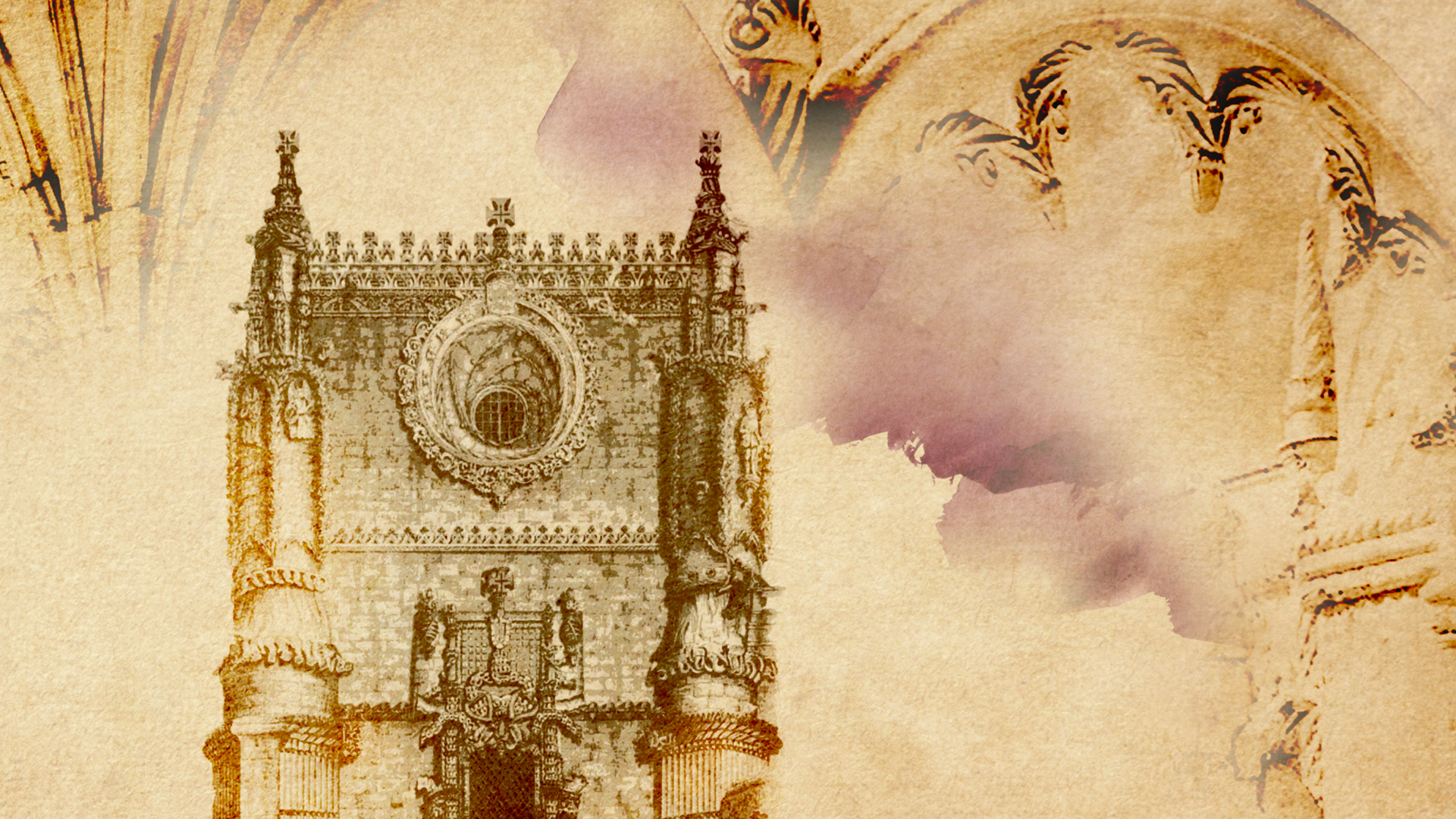The Manueline is an artistic style that prevailed during the reign of King Manuel I (1495-1521), mediating between the late Gothic and Renaissance language, which synthesises artistic discourses such as Flamboyant Gothic, Spanish Plateresque, and Peninsular Mudejar art.
In architectural terms, the Manueline fully conformed to the prevailing canons of Gothic art, namely in the choice of hall churches, in which the naves are of coincident stature, with the transept being annulled. The fundamental distinction lies in the decorative elements used, namely in its rich iconography, inspired by elements associated with the Portuguese maritime epic.
Featuring naturalistic motifs inspired by exotic fauna and maritime and overseas flora, such as coral, shells, palm trees, and exotic animals, it also boasted symbols of the fatherland and royal heraldry, such as the royal crown, the king’s coat of arms, the armillary sphere, the Cross of Christ, and the flag with the five corners. However, the most prominent iconographic elements in the Manueline language are unequivocally the objects of everyday use in the vocabulary of the discoveries and navigations, namely the ropes, nets, anchors, sails, caravels, and ships.
Exposed exuberantly in the sculptural ornamentation of the portals, windows, vaults, and lacy arches of the buildings built under the aegis of this artistic language, the Manueline style stands out for its discourse which is deeply linked to Portuguese identity.
Manueline architecture was categorised by Francisco Adolfo Varnhagen, who, in 1842, found in the common traits of the great works of the Manueline period attributes that brought them together under the same category.
With Diogo and Francisco de Arruda, Diogo Boitaca, and João de Castilho as its main craftsmen, the Manueline style was particularly widespread in the great public works carried out during the reign of King Manuel I, with the Jerónimos Monastery and the Convent of Christ as its main exponents.
The Manueline in Portugal
